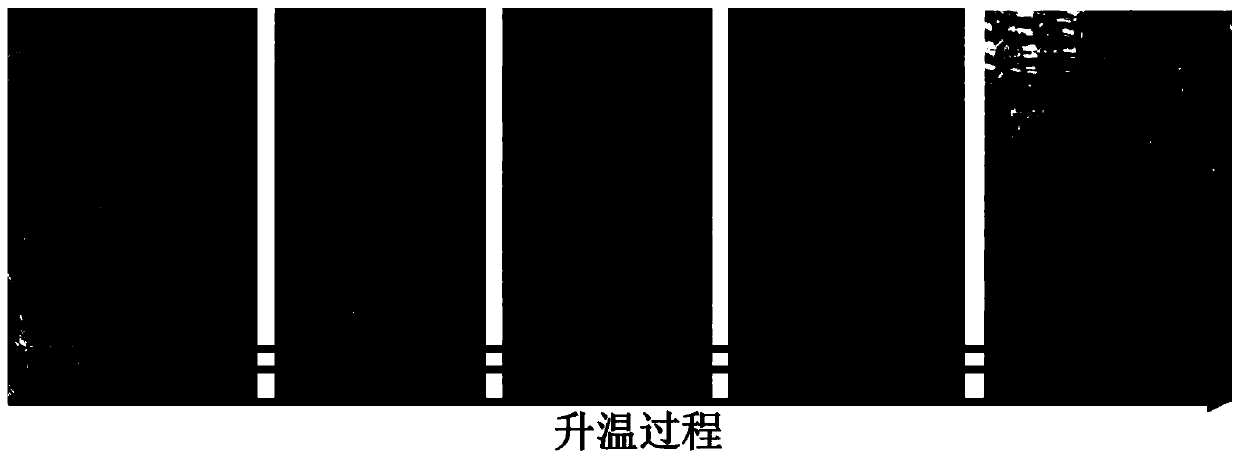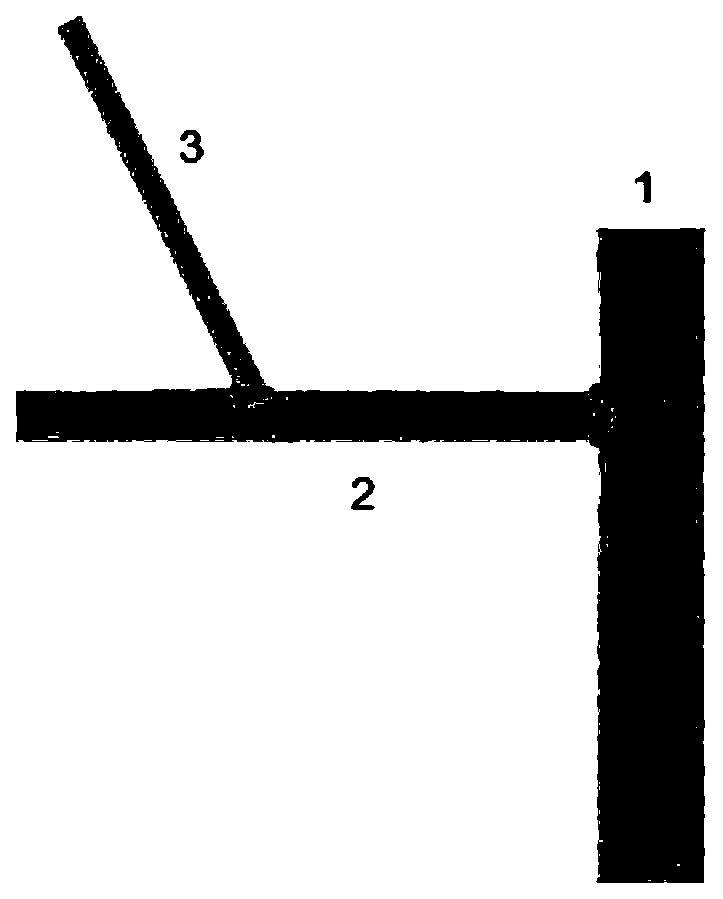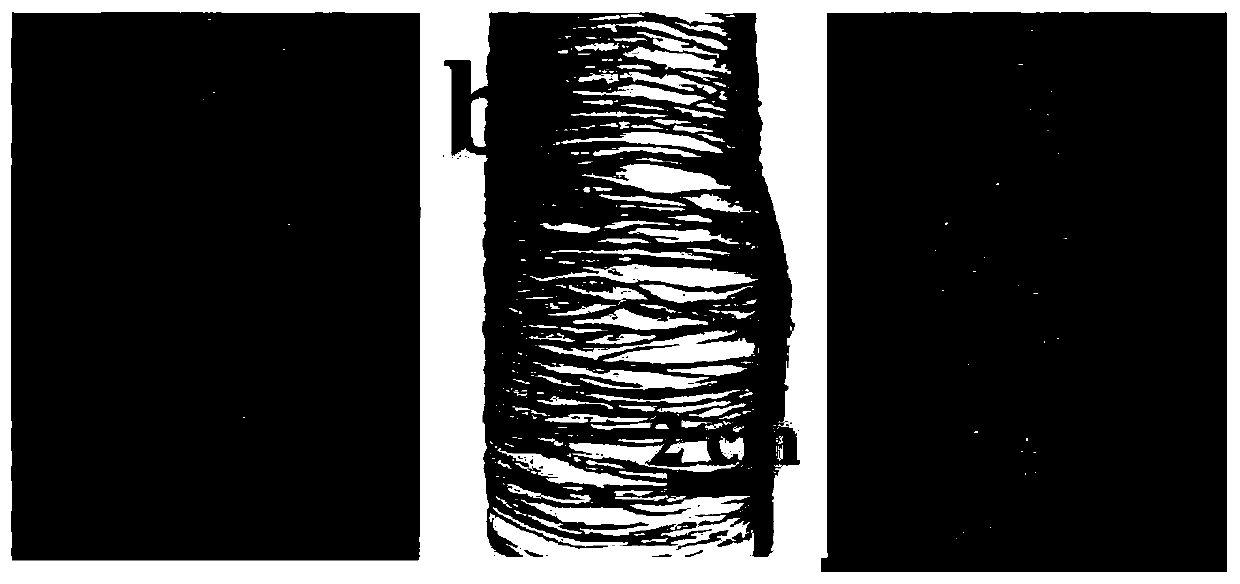Thermochromic PLA (polylactic acid) fiber of core-shell structure as well as preparation method and application of thermochromic PLA fiber
A polylactic acid fiber, core-shell structure technology, applied in the chemical characteristics of fibers, rayon manufacturing, textiles and papermaking, etc., to achieve the effect of wide color selectivity and wide discoloration temperature
- Summary
- Abstract
- Description
- Claims
- Application Information
AI Technical Summary
Problems solved by technology
Method used
Image
Examples
Embodiment 1
[0042] (1) Disperse 25g of polylactic acid particles in 80g of dichloromethane solvent, ultrasonically disperse for 8h to obtain a uniform and clear polylactic acid solution, weigh 100mL of polyethylene glycol 400 for standby; 10g, disperse the temperature-sensitive color-changing ink in 85g deionized water, add 5g of sodium alginate to the deionized water mixed with the temperature-sensitive color-changing ink, and ultrasonically disperse for 6 hours to obtain a mixed aqueous solution of red color-changing ink and sodium alginate for use.
[0043] (2) The first PTFE pipe 1 is placed longitudinally, the second PTFE pipe 2 is laterally connected with the first PTFE pipe 1, and the third PTFE pipe 3 is connected with the second PTFE pipe The tubes 2 are connected longitudinally; the joints are sealed with epoxy resin glue to obtain a microfluidic device. The diameters of the first polytetrafluoroethylene pipe 1 , the second polytetrafluoroethylene pipe 2 , and the third polytetr...
Embodiment 2
[0050] (1) Disperse 20g of polylactic acid particles in 80g of dichloromethane solvent, ultrasonicate for 8h to obtain a uniform and clear polylactic acid solution, take 120mL of polyethylene glycol 400 for standby; Disperse the green thermochromic ink in 81 g of deionized water, add 6 g of sodium alginate to the deionized water mixed with the green thermochromic ink, and ultrasonically disperse for 7 hours to obtain a mixed aqueous solution of the green thermochromic ink and sodium alginate for later use.
[0051] (2) The first PTFE pipe 1 is placed longitudinally, the second PTFE pipe 2 is laterally connected with the first PTFE pipe 1, and the third PTFE pipe 3 is connected with the second PTFE pipe The tubes 2 are connected longitudinally; the joints are sealed with epoxy resin glue to obtain a microfluidic device. The diameters of the first polytetrafluoroethylene pipe 1 , the second polytetrafluoroethylene pipe 2 , and the third polytetrafluoroethylene pipe 3 are 2 mm, 1...
Embodiment 3
[0054] (1) Disperse 16g of polylactic acid particles in 80g of dichloromethane solvent, ultrasonically disperse for 8h to obtain a homogeneous and clear polylactic acid solution, and weigh 140mL of polyethylene glycol 400 for standby; 15g of ink and 7g of sodium alginate were dispersed in 78g of deionized water, and ultrasonically dispersed for 8h to obtain a mixed solution of blue color-changing ink, water and sodium alginate.
[0055] (2) The first PTFE pipe 1 is placed longitudinally, the second PTFE pipe 2 is laterally connected with the first PTFE pipe 1, and the third PTFE pipe 3 is connected with the second PTFE pipe The tubes 2 are connected longitudinally; the joints are sealed with epoxy resin glue to obtain a microfluidic device. The diameters of the first polytetrafluoroethylene pipe 1 , the second polytetrafluoroethylene pipe 2 , and the third polytetrafluoroethylene pipe 3 are 2 mm, 1 mm, and 500 μm, respectively.
[0056] (3) three kinds of solutions (dichlorom...
PUM
| Property | Measurement | Unit |
|---|---|---|
| diameter | aaaaa | aaaaa |
| diameter | aaaaa | aaaaa |
| diameter | aaaaa | aaaaa |
Abstract
Description
Claims
Application Information
 Login to View More
Login to View More - R&D
- Intellectual Property
- Life Sciences
- Materials
- Tech Scout
- Unparalleled Data Quality
- Higher Quality Content
- 60% Fewer Hallucinations
Browse by: Latest US Patents, China's latest patents, Technical Efficacy Thesaurus, Application Domain, Technology Topic, Popular Technical Reports.
© 2025 PatSnap. All rights reserved.Legal|Privacy policy|Modern Slavery Act Transparency Statement|Sitemap|About US| Contact US: help@patsnap.com



